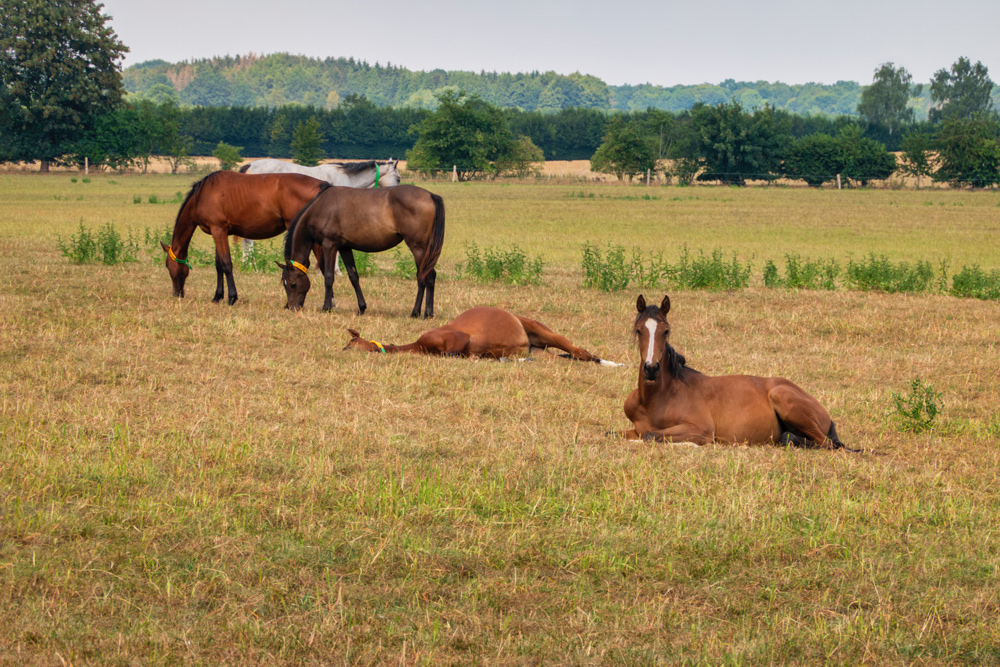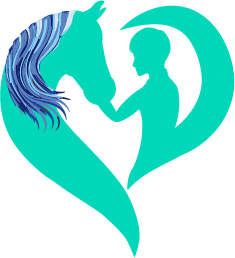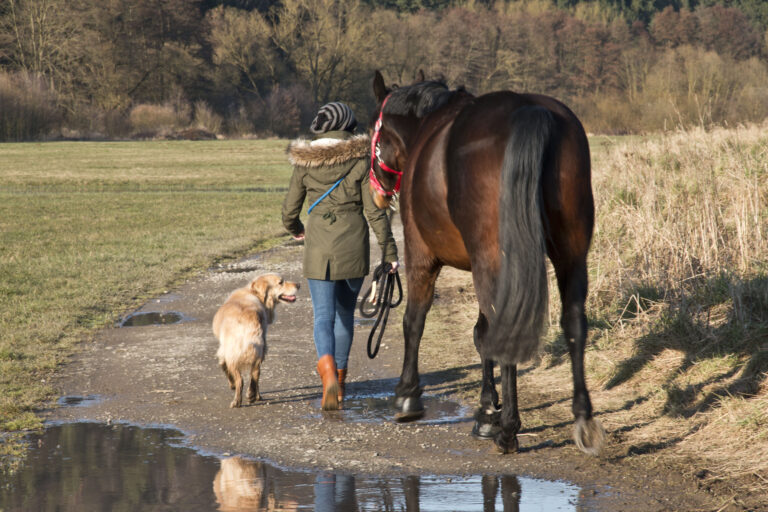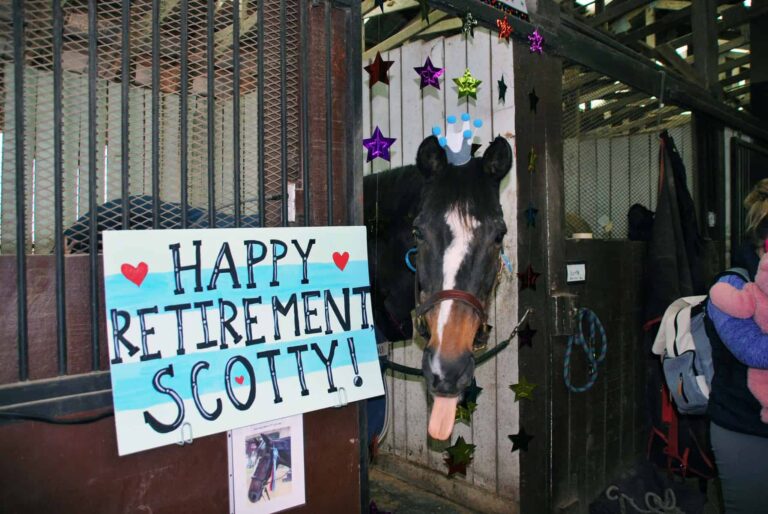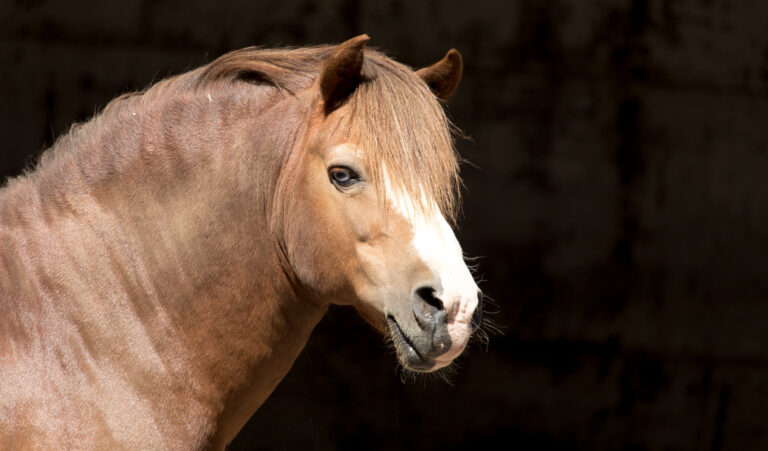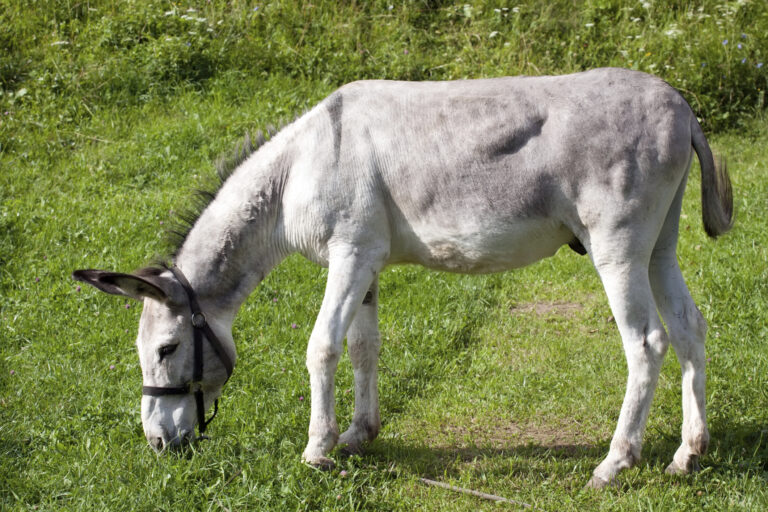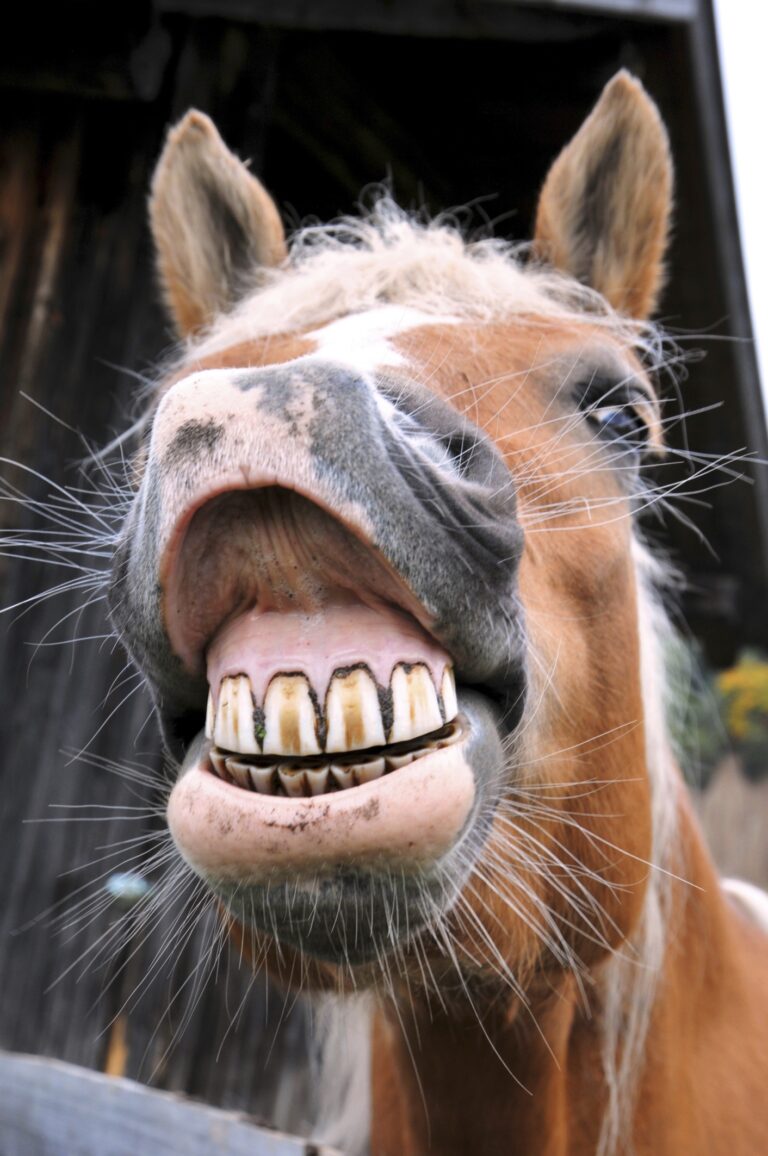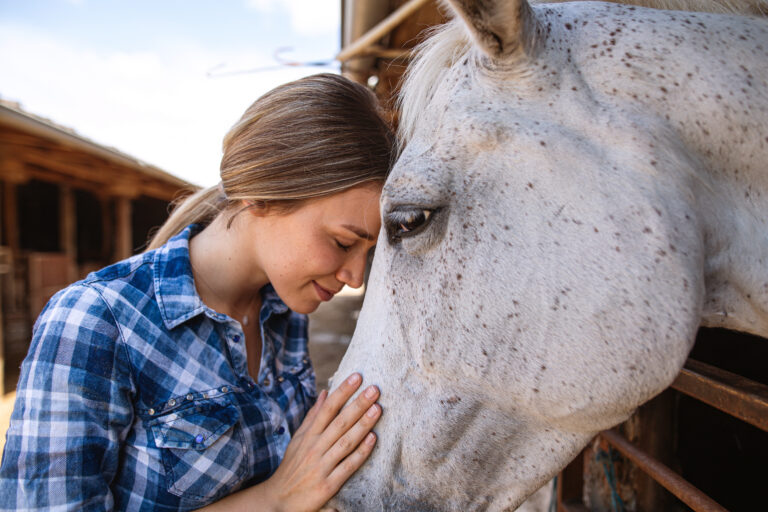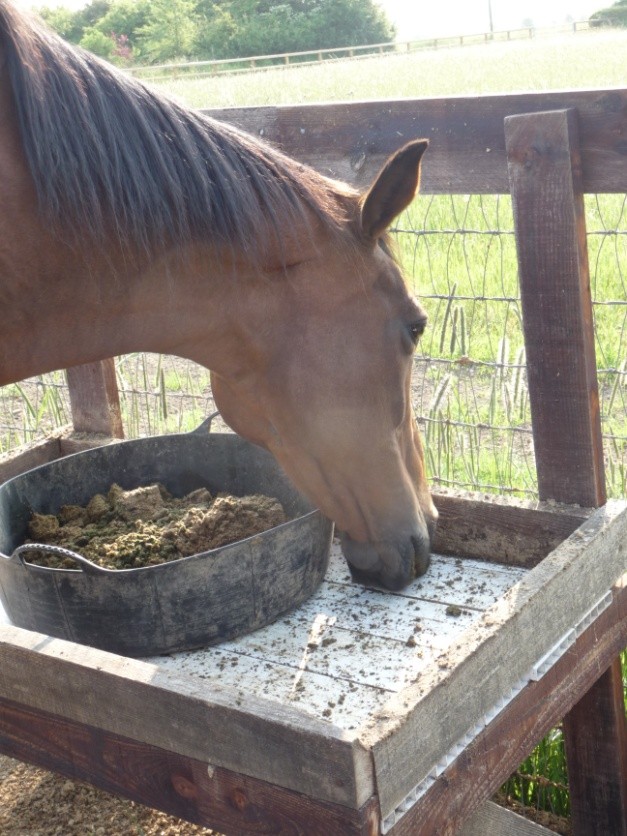Have you ever worried about your horse having narcolepsy or sleep deprivation? In this podcast, Amy Polkes, DVM, DACVIM, tells us the difference in these conditions. She helps us understand what can happen and why.
(Editor’s note: The content of this podcast is the expert’s approach to the topic. Please consult with your practitioner if you have questions.)
What Are These Sleep Issues?
“I have a lot of clients that say their horse has narcolepsy,” said Polkes. “It can often be confused with sleep deprivation. Narcolepsy is truly a neurologic sleep disorder. Horses get daytime sleepiness and they can suddenly collapse. It is rare, and it can be misdiagnosed because of horses falling asleep because of sleep deprivation rather than having a true neurological disorder.
“It’s important for people to know what the difference is so they can recognize the clinical signs,” she added.
Sleep Deprivation in Senior Horses
Polkes said sleep deprivation can happen in any horse. “The reason we are focusing on the senior horse is often it can be due to a lack of being able to comfortably lay down and get REM sleep,” she said. “In order for horses to have true REM sleep, they need to be able to lay down. They can’t get REM sleep standing up.”
She said horse owners know horses can sleep standing up using their stay apparatus. However, they have to lay down for periods of time to get REM sleep.
“As we think about the senior horse, as they get older, they may have arthritis in their joints,” Polkes pointed out. “They may have more difficulty getting down or getting back up. So they may be reluctant to lay down or stay down for long periods of time. That’s where you can get sleep deprivation just from something painful.”
She reminded owners that any horse of any age that has pain issues could have this problem.
Environmental Concerns
Polkes said horses of any age are aware of their environments. “They need to be able to feel like they can get up quickly,” said Polkes. “Unless they feel comfortable that they have another horse watching over them, that can also lead to sleep deprivation. They are afraid they can’t get down and get back up again and flee.”
Comfort for horses that are stabled can be another cause of sleep deprivation. Polkes said if the senior horse is in a stall with very light bedding or its too small, it can’t comfortably move around or it’s hard on its joints.
“We need to make sure they are in a comfortable spot with deep bedding, or if they are outside there is a soft place for them to lay down,” said Polkes. That could be a run-in shed on soft ground.
Clinical Signs of Sleep Deprivation
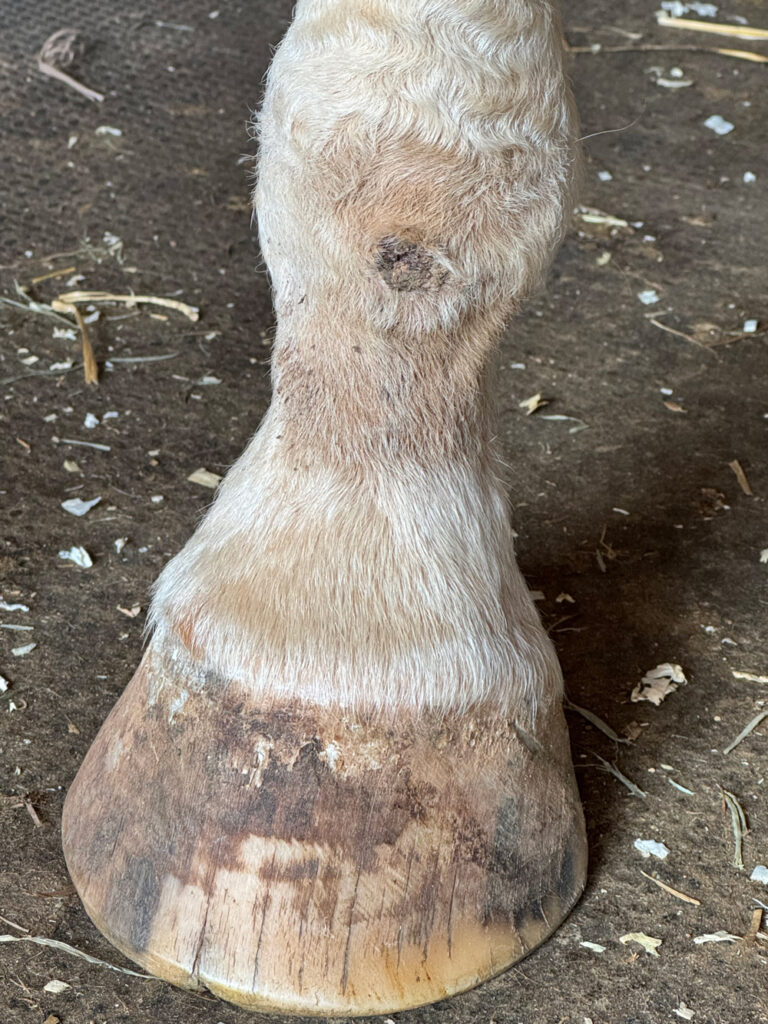
Often, horses with sleep deprivation will have characteristic ways that they fall down. “Horses with sleep deprivation is a slow kind of thing. You’ll see a horse will back up into a corner of a stall and put its head down farther and farther, then they buckle and jump back up.
“They catch themselves, but get little cuts or lesions on the front of the fetlock,” described Polkes. “Those lesions can be a tell-tale sign. Especially if it is bilateral (on both sides).”
She also described a horse that is brought in to be groomed and it is hanging its head and maybe swaying a little or almost falls in the crossties or on a lead rope. That can be another sign.
“With narcolepsy, it’s more sudden,” described Polkes. “They aren’t going to do this slow sway, ‘I’m falling asleep.’ Narcolepsy is a sudden collapse.”
Now What?
Polkes said sleep deprivation is secondary to something. It could be musculoskeletal pain or environmental insecurity. The treatment is getting rid of those types of problems.
Address the musculoskeletal pain. Address the housing situation. Do they have other horses around them so they feel secure in the herd?
“It is really important to look at the barn environment,” said Polke. “Are there any predators? People have put cameras on the outside of the barn and seen animals [like bobcats, coyotes, etc.] and the horses aren’t sleeping.”
Horses are herd animals, she reminded the audience. They want another horse to watch over them while they rest, and they will take turns.
“Particularly in the senior horse, it’s paying attention to musculoskeletal pain,” she noted. “Ensure they have adequate bedding to lay down on or a place in the field. Make sure they have plenty of room to lay down and get back up.
“Sleep deprivation is a secondary thing,” he stated. “That’s what we are looking for—why aren’t they sleeping?”
Keeping Watch
There are a lot of video cameras that are simple to put up in stalls. Those can be used to monitor horses when you are not around, said Polkes.
Polkes said she asks owners if they ever see their horses laying down. If not, then those horses are not getting proper REM sleep.
“I’ve had people who thought their horse was having a seizure because the horse was laying down in REM sleep,” she said. “And they can really get into deep REM sleep. That’s what horses need to do.”
She said if you bring a horse in for grooming and it acts like it is sedated, it is likely that the horse is not getting enough sleep.
Final Words
In general, we need to be really cognizant of horses’ environments, said Polkes. She also reminded owners that horses are herd animals. “They need friends and they need to be able to see other horses. They need to socialize,” she said.
She said when horses are housed in barns, they need to be able to see each other. “Sleep deprivation is just one of the the things that can occur with an environmental insecurity,” Polkes stated.
There are many ways to help horses with joint pain, she said. “We want to get it early. We don’t want to wait until they are so bad that it can be hard to get on top of it,” said Polkes. “I just pay special attention to senior horses in that way.”
About Our Guest
Amy Polkes, DVM, DACVIM, is an equine internal medicine diagnostic specialist. She owns Equine Internal Medicine and Diagnostic Services, an equine internal medicine mobile consulting practice providing specialty care for referring veterinarians on equine internal medicine cases. The service is active in New York, Connecticut, Maryland, Virginia, and Colorado. In addition, Polkes works part-time for Antech Diagnostics’ equine division as Medical Director/Equine Diagnostic Specialist. Her responsibilities there include managing equine diagnostic testing, marketing, and sales. She is also a consultant for Antech Diagnostics on equine internal medicine cases.
Further Reading
- Does My Horse Have Narcolepsy or Sleep Deprivation? Dr. Amy Polkes. MySeniorHorse.com
- What You Should Know About Equine Osteoarthritis. MySeniorHorse.com
- Equine Osteoarthritis and Corticosteroid Joint Injections. Kimberly S. Brown. MySeniorHorse.com
- Could miRNAs Predict OA and OCD? MySeniorHorse.com
- What is Osteoarthritis in Horses? MySeniorHorse.com
- Equine Arthritis and Exercise. MySeniorHorse.com
- Anti-Inflammatories for Horse Barns. Dr. Nancy Loving. MySeniorHorse.com
- ‘Feel-Good’ Horse Touch, Such as Scratching. Dr. Sue Dyson. MySeniorHorse.com
- My Senior Horse Podcast: Horses and the Science of Harmony. Dr. Sue Dyson. MySeniorHorse.com
- Horses & the Science of Harmony. Dr. Sue Dyson and Padma Videos.
- The 24 Behaviors of the Ridden Horse in Pain: Shifting the Paradigm of How We See Lameness. Dr. Sue Dyson with Padma Video.
- Horse Behavior During Tacking and Mounting. Dr. Sue Dyson. MySeniorHorse.com
- Ridden Horse Performance Checklist: Behaviors in Ridden Horses that Might Signify Discomfort. Dr. Sue Dyson. MySeniorHorse.com
- How An Uncomfortable Horse Might Feel to a Rider. Dr. Sue Dyson. MySeniorHorse.com
-
Editors of My Senior Horse are journalism professionals, most of whom are lifelong horse owners.View all posts

